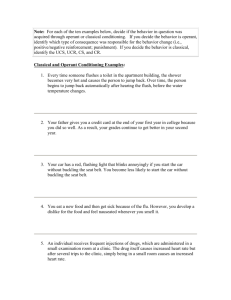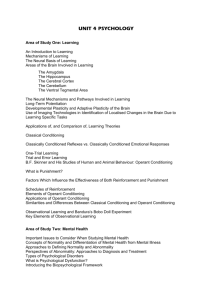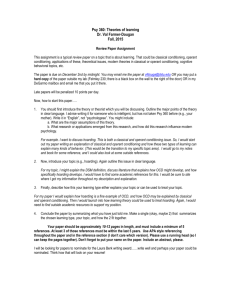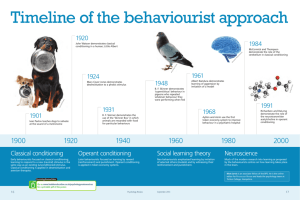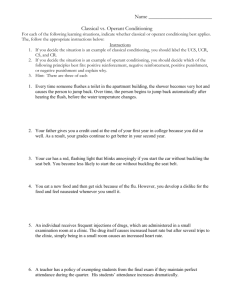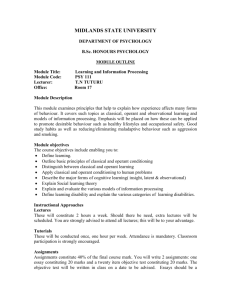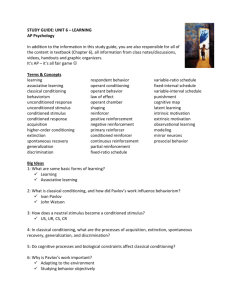MKT 502 Consumer and Buyer Behavior
advertisement
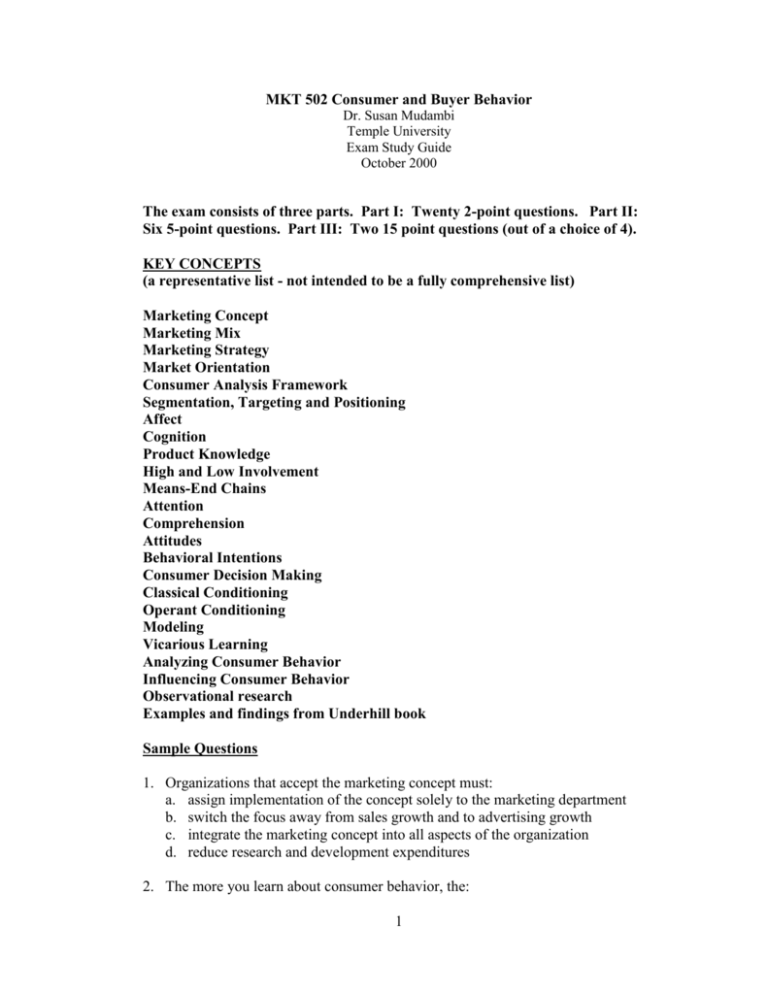
MKT 502 Consumer and Buyer Behavior Dr. Susan Mudambi Temple University Exam Study Guide October 2000 The exam consists of three parts. Part I: Twenty 2-point questions. Part II: Six 5-point questions. Part III: Two 15 point questions (out of a choice of 4). KEY CONCEPTS (a representative list - not intended to be a fully comprehensive list) Marketing Concept Marketing Mix Marketing Strategy Market Orientation Consumer Analysis Framework Segmentation, Targeting and Positioning Affect Cognition Product Knowledge High and Low Involvement Means-End Chains Attention Comprehension Attitudes Behavioral Intentions Consumer Decision Making Classical Conditioning Operant Conditioning Modeling Vicarious Learning Analyzing Consumer Behavior Influencing Consumer Behavior Observational research Examples and findings from Underhill book Sample Questions 1. Organizations that accept the marketing concept must: a. assign implementation of the concept solely to the marketing department b. switch the focus away from sales growth and to advertising growth c. integrate the marketing concept into all aspects of the organization d. reduce research and development expenditures 2. The more you learn about consumer behavior, the: 1 a. b. c. d. less important overt consumer behavior becomes the better your chances of developing successful marketing strategies less money you should spend on advertising less important market segmentation becomes 3. Most consumers' affective responses are the result of: a. learning b. innate biology c. classical conditioning d. physical environment 4. The immediate environment or context of a purchase activates knowledge structures that reflect a consumer's: a. intrinsic self-relevance b. situational self-relevance c. level of involvement d. instrumental values e. terminal values 5. 6. 7. 8. Describe each component of the Wheel of Consumer Analysis. Describe the four types of affective responses. What or whom is VALS? Why should marketers want to know about VALS? Give an example of how affect responses can have a physical or physiological impact. 9. Explain the difference between general and procedural knowledge. Give an example of each. 10. Explain the managerial relevance of means-end chains. 11. Apply the means-end chain to the purchase of a cell phone. 12. Give an example of a consumer's efforts toward selective exposure. 13. Give an example of a high-involvement purchase and a low-involvement purchase. 14. What is the function of the consumer's cognitive system? 15. What is the difference between Ao and Aact and why should marketers care? 16. What is the difference between classical conditioning and operant conditioning? 17. Give an example of how a marketer could use operant conditioning to increase the likelihood of repurchase. 18. How can marketers influence a consumer's information search for car insurance? 19. "Funds access is important to accountants, not to marketers." Comment on this view. 20. Should marketing strategy be more concerned with changing consumer affect, cognition, or behavior? Explain. 2


